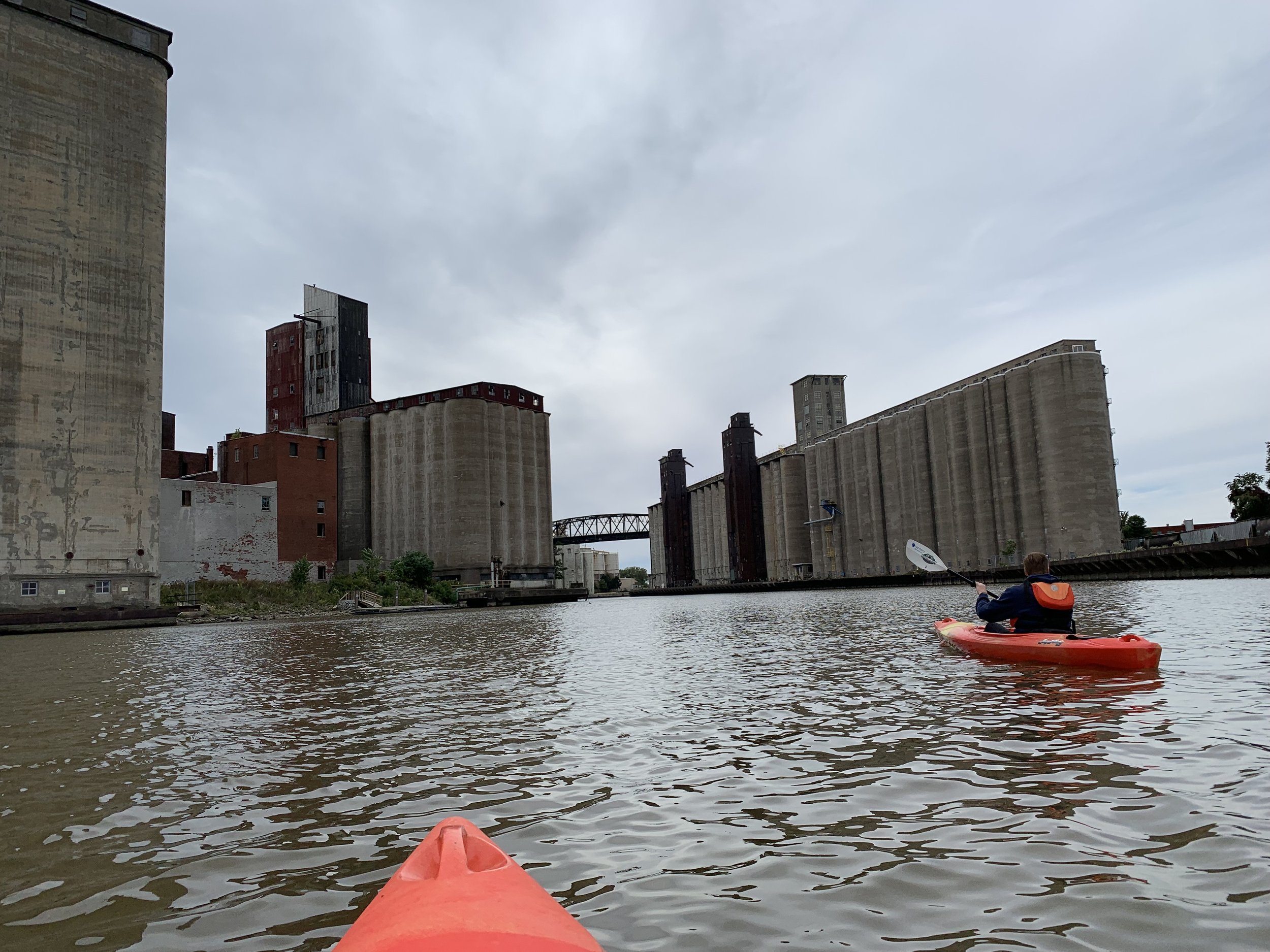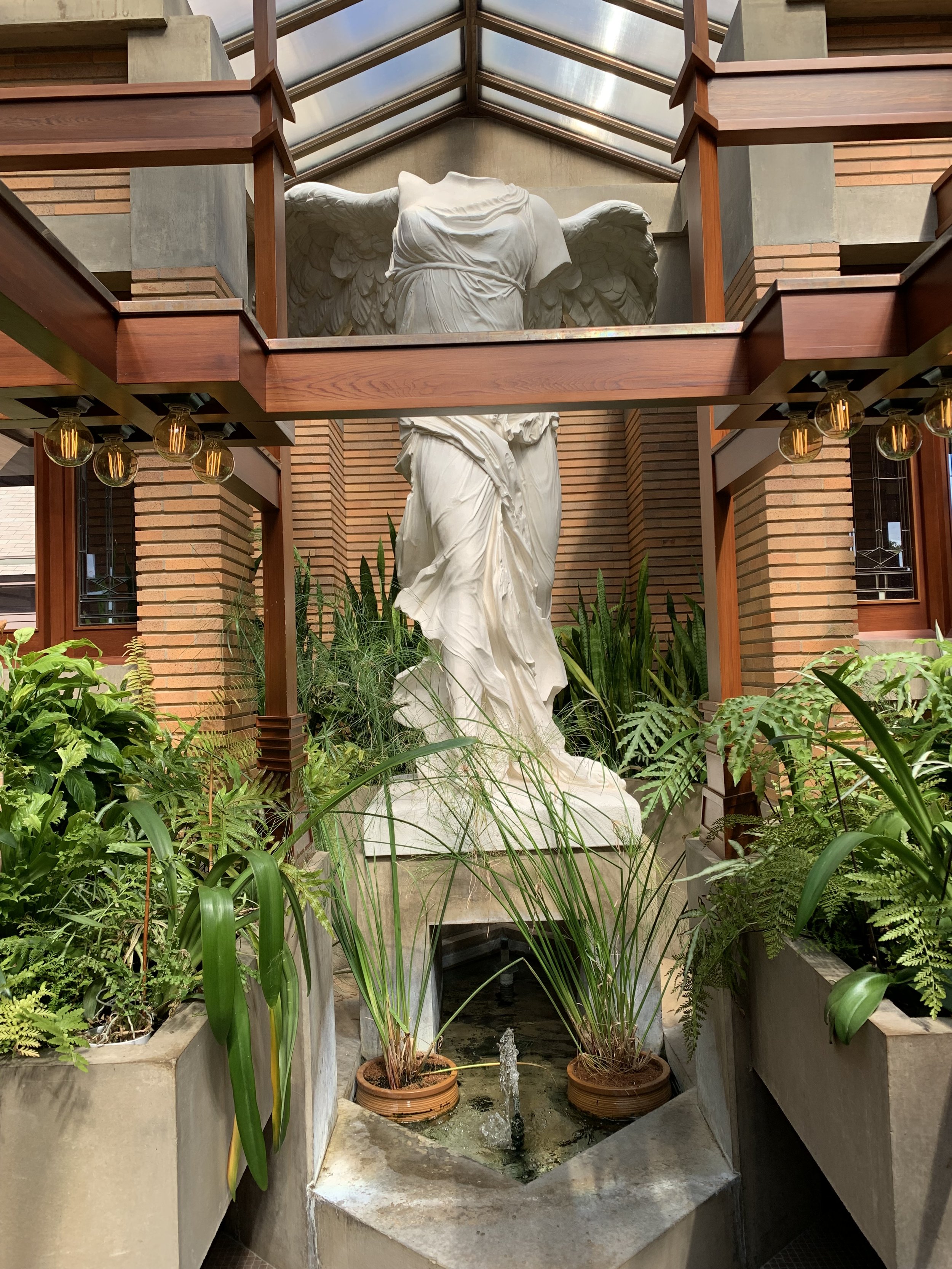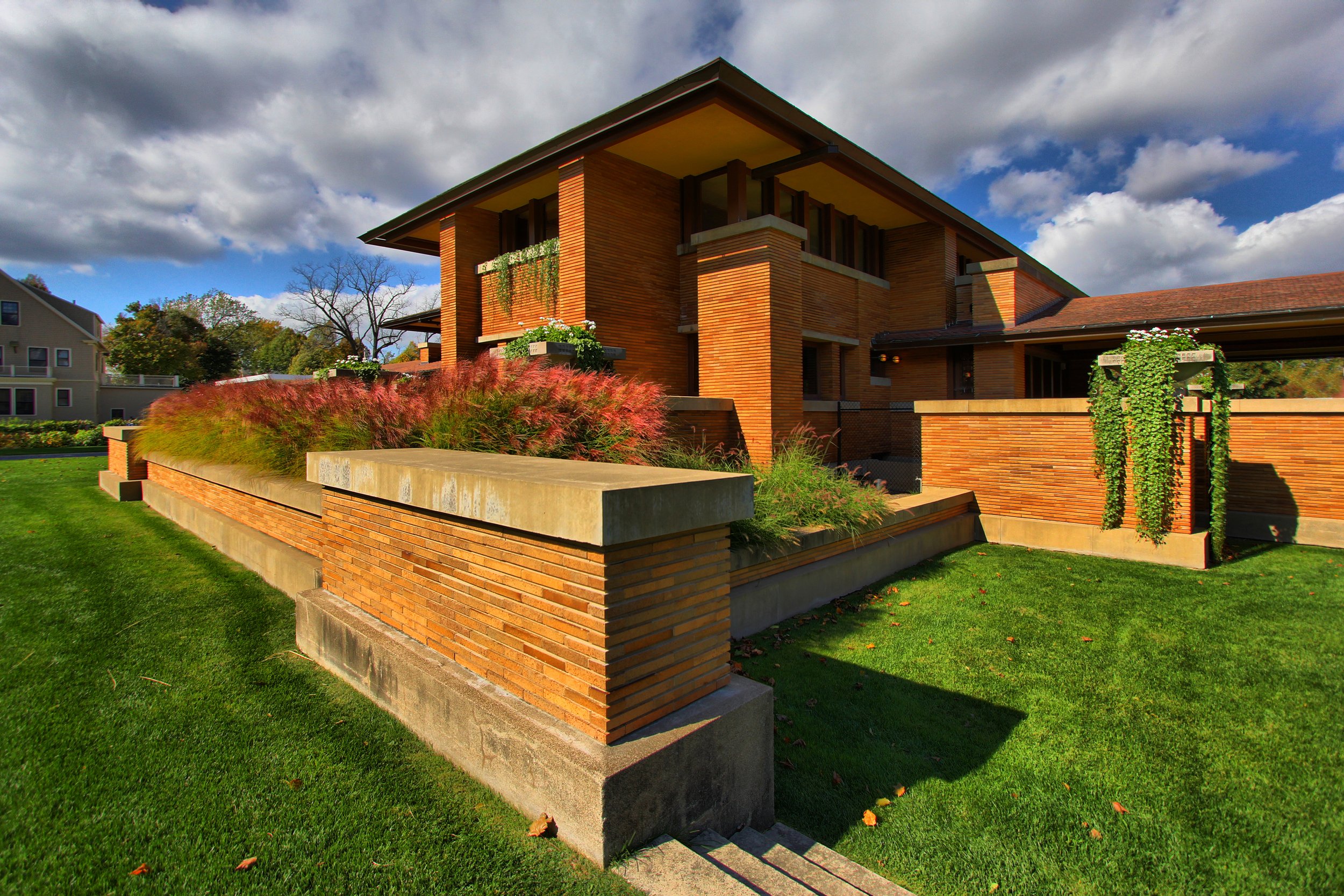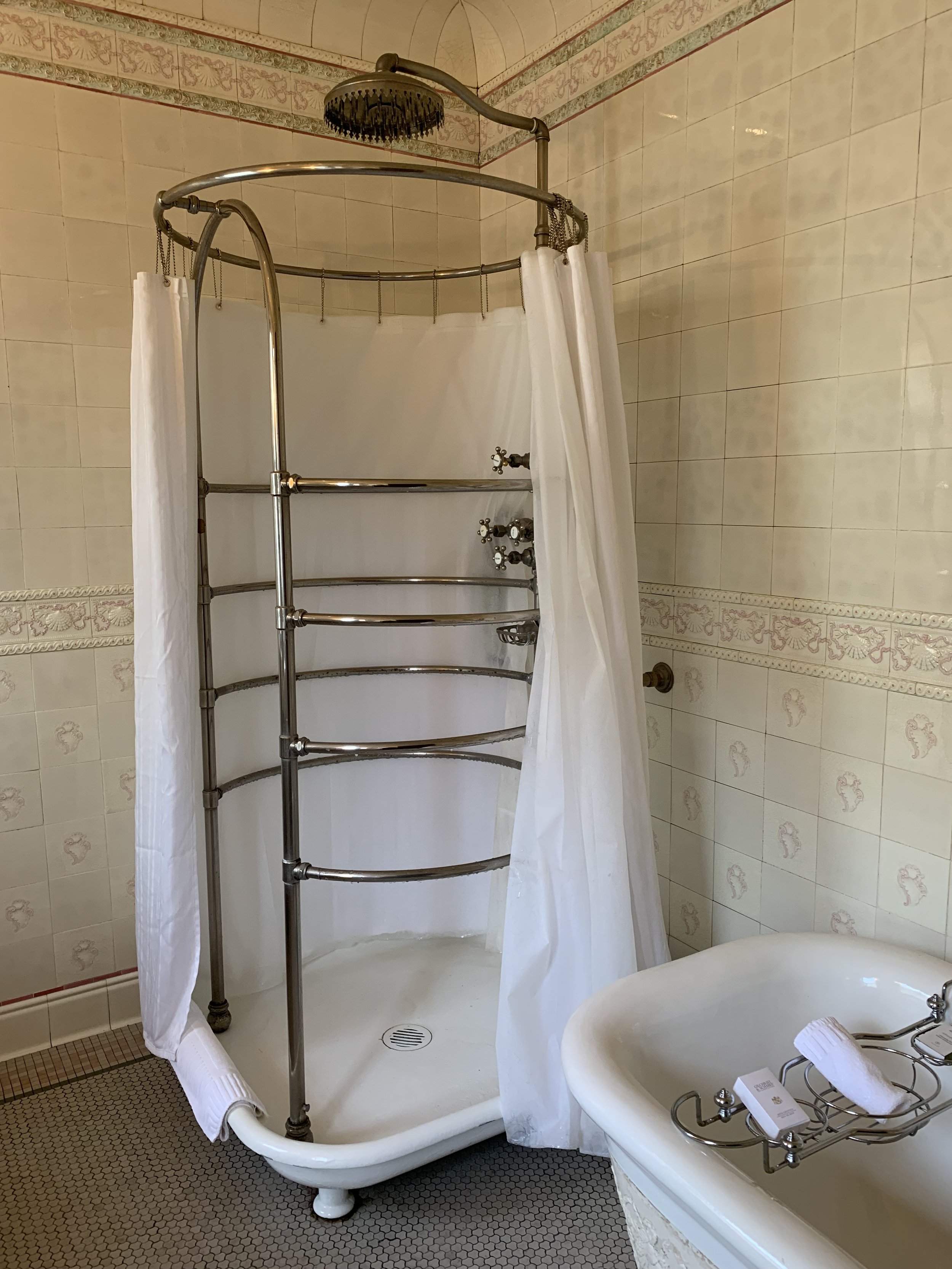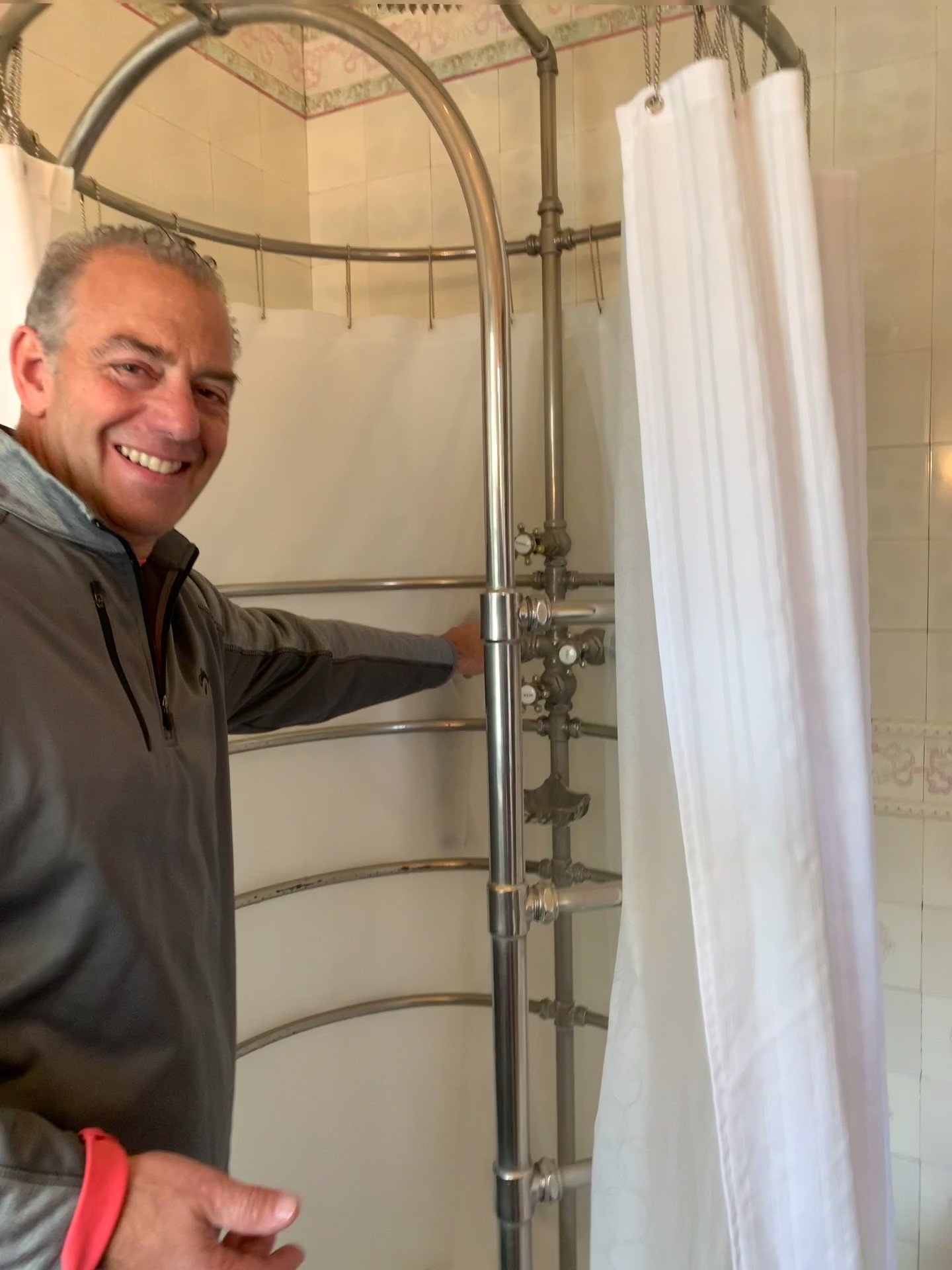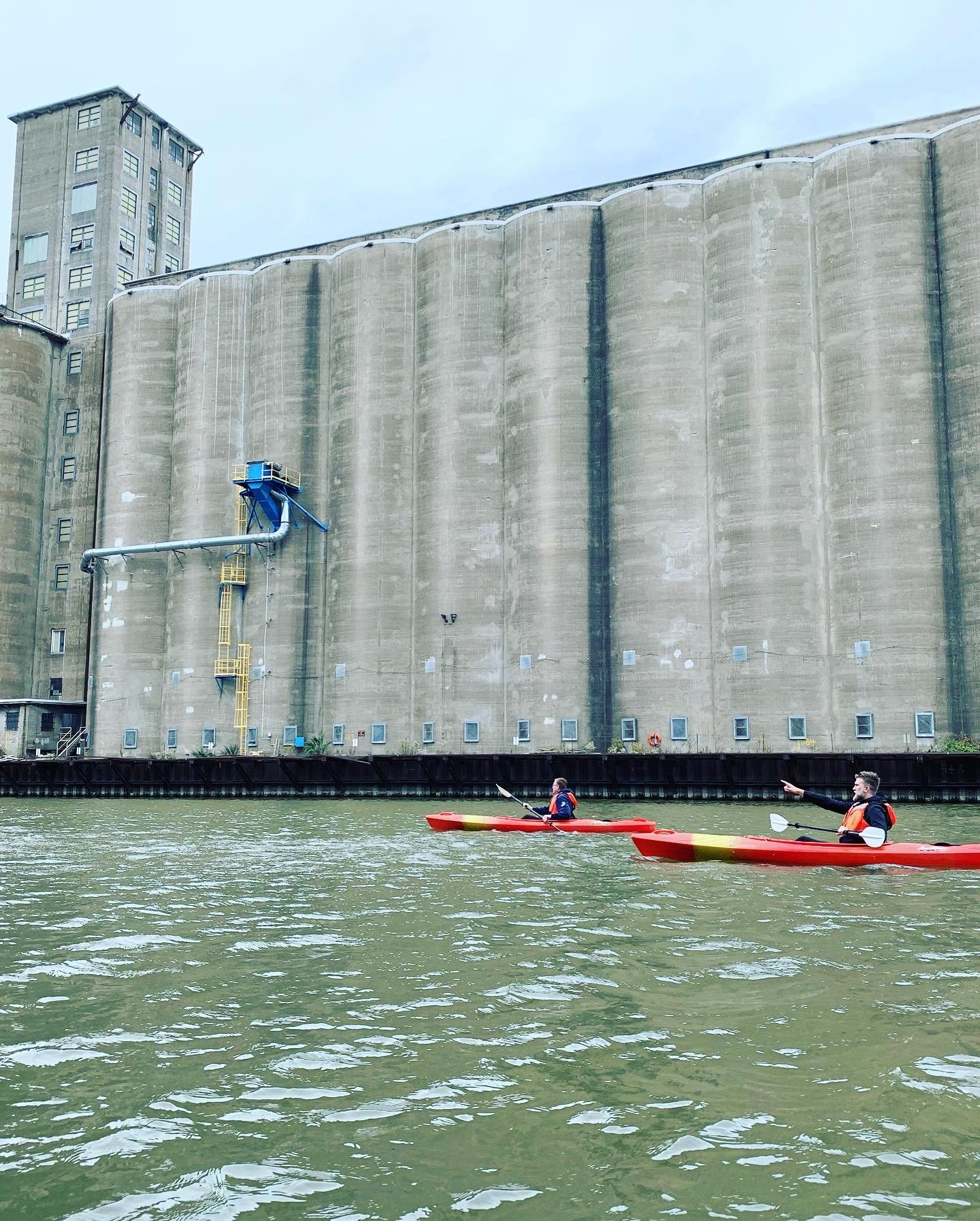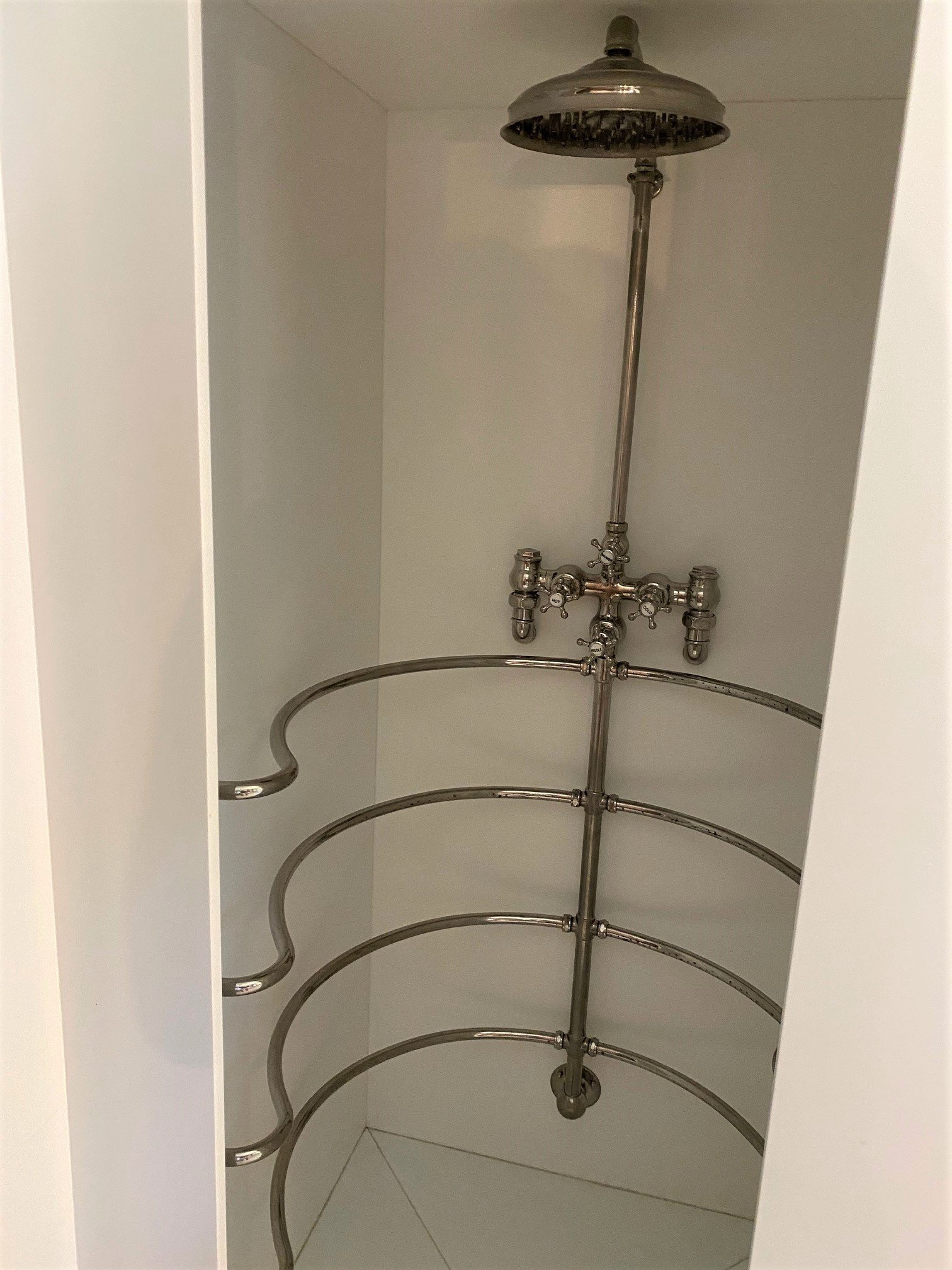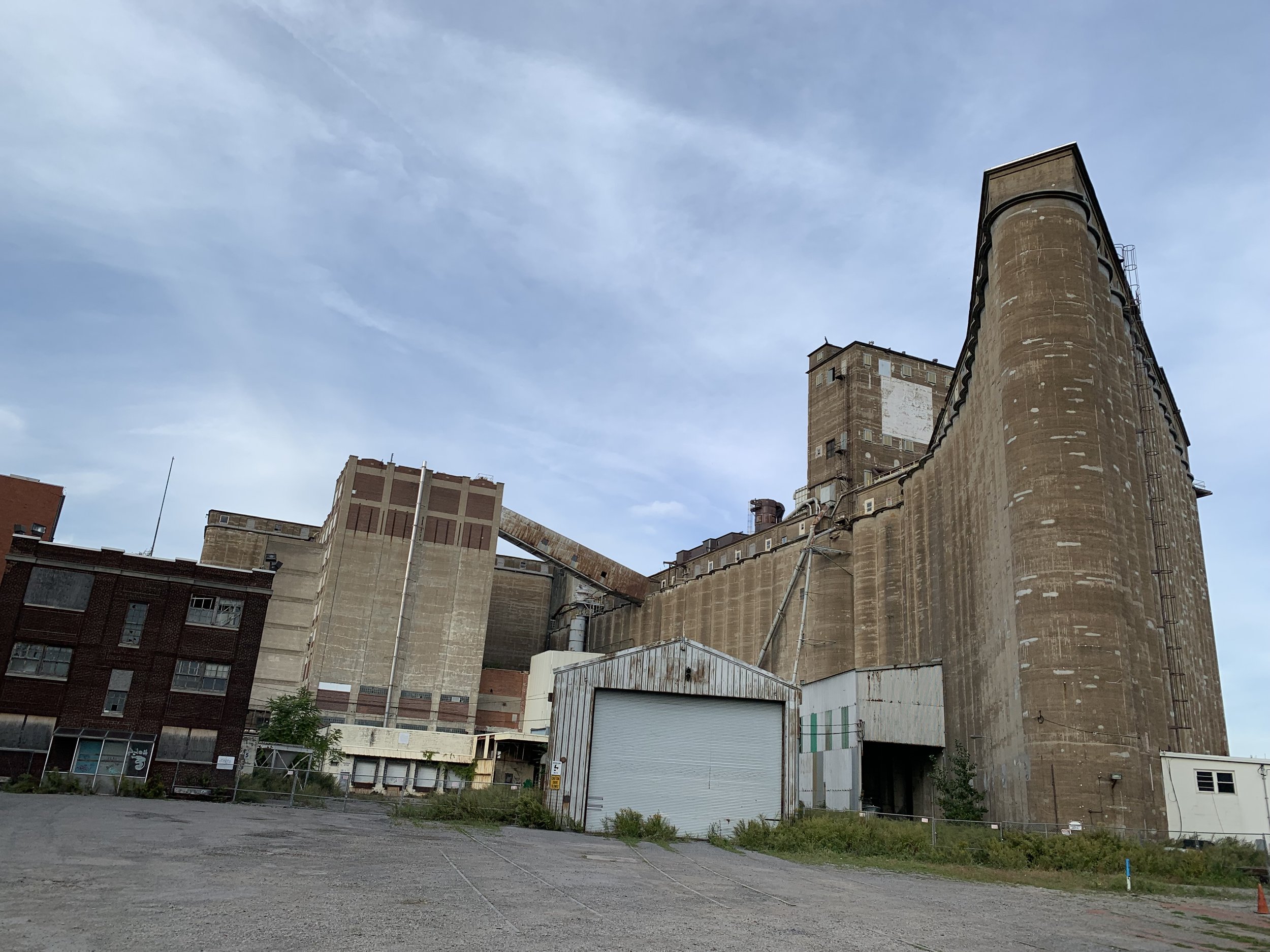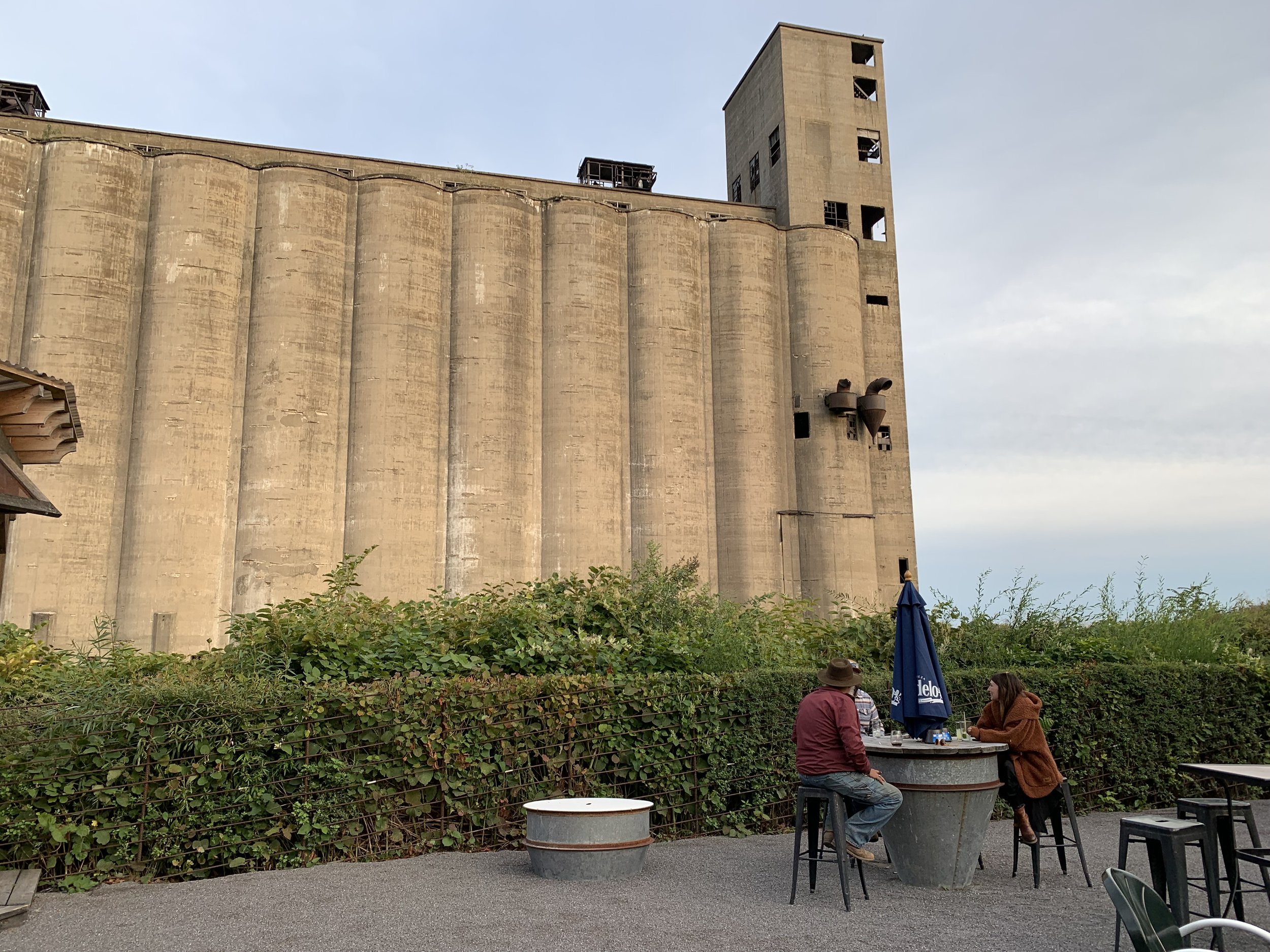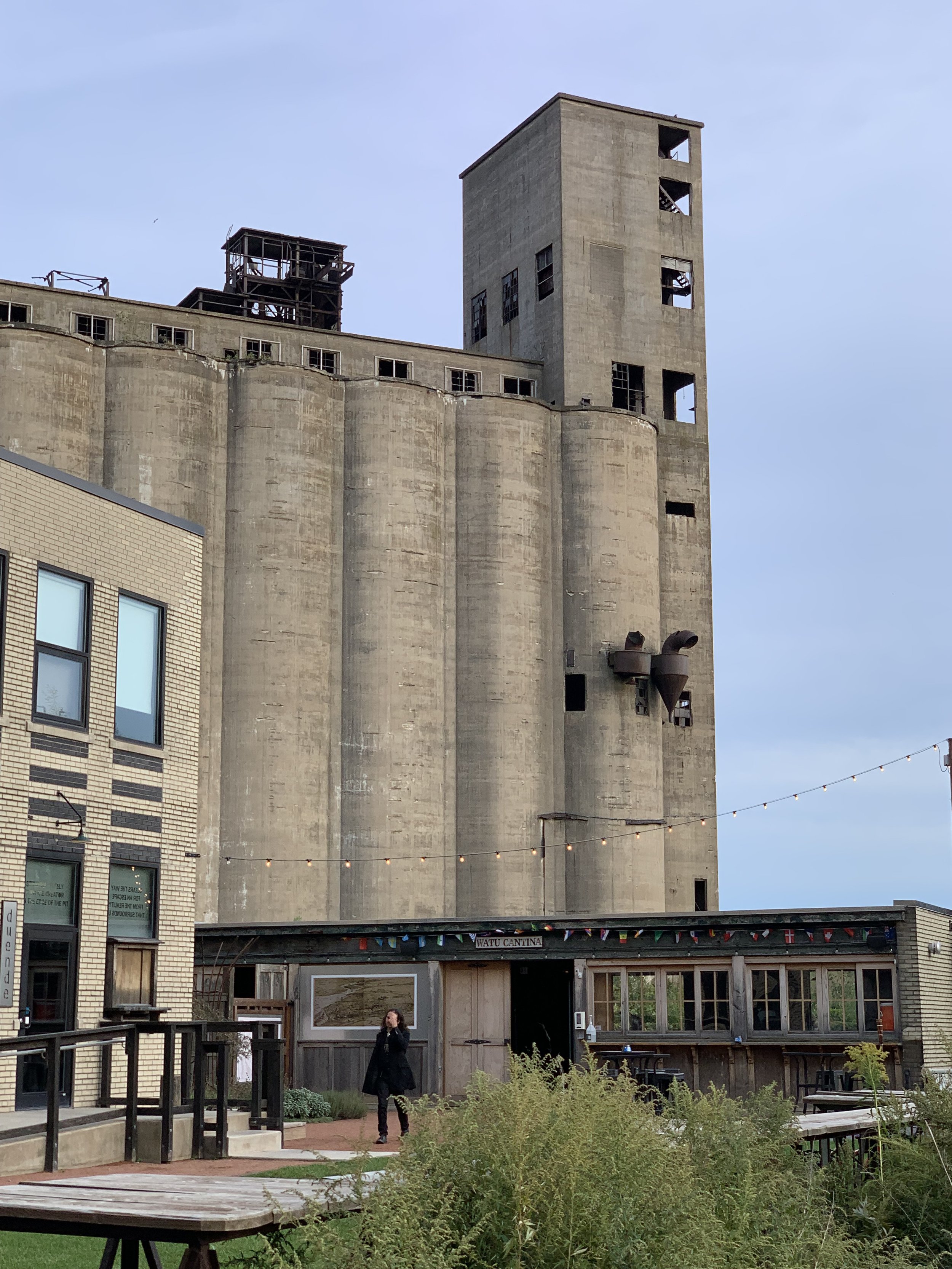Modern Travel - A Victorian shower proves to be a shocking travel adventure in Buffalo
/I’ve done my share of adventures on my travels, but I never imagined showering would be one of them until a recent weekend getaway to Buffalo, NY.
I stared at a contraption, which resembled a cage. It was wrapped by four horizontal, perforated pipes in the center and one long vertical pipe leading to the shower head.
We were staying at the InnBuffalo, an historic home in the city’s Elmwood Village, a vibrant tree-lined district known for its farmer’s market, murals and coffeehouses. The so-called Victorian needle spray shower was original to the house and would have represented the latest and greatest in modern technology when it was installed at the turn of the 20th century.
“It was marketed to be used only by men,” said Joe Lettieri, the proprietor of the inn, and explained the promotional materials espoused that women’s skin was deemed too sensitive to handle the prickly jets of water that spewed out of the ribbed pipes. At the time, the shower would have cost the equivalent of $50,000 today. No wonder it needed a few extra promotional gimmicks. And so it was also a health product, whose needle-like sprays were designed to stimulate and massage internal organs and detoxify the liver.
As Joe explained which knobs controlled what, the correct order to turn them and how to turn them (not too much being the key takeaway), I half expected him to pull out a waiver to sign.
Though this shower was invented in England, it’s not surprizing the original owner of the house, Herbert H. Hewitt, would have been attracted to the cutting-edge modern technology. He himself was an inventor with multiple patents to his name
“Buffalo was a mecca for inventors,” said Joe and explained that when Hewitt lived here the city was booming. Money was rolling in (Buffalo had more millionaires per capita than any other city in America in the late 1800s), Tesla was lighting up the city with hydro power from Niagara Falls and inventors were pioneering apparatuses and concepts that ranged from air conditioning and the pacemaker to instant coffee and the windshield wiper.
The grain elevator was another of the city’s important innovation. Used for unloading and storing shipments that arrived via the Erie Canal, Buffalo was the largest grain port on the planet. These towering silos remain today and ‘Elevator Alley’ along the Buffalo River is home to the densest collection of concrete grain elevators in the world.
I decided to forego the intimidating shower for the evening and get a closer look at these historic relics. We ventured to Silo City for a pre-dinner drink at Duende. As we approached our destination, we thought perhaps Google Maps had steered us in the wrong direction. It looked like an industrial ghost town with seemingly abandoned brick buildings in the shadows of the massive elevators. But we spotted a small sign that read Duende Open and just beyond was the parking lot. Judging by the number of cars, it was far from deserted.
The surreal sense of emptiness we sensed being in the midst of these massive forsaken structures dissipated the moment we entered Duende. Live jazz musicians and a lively crowd greeted us as we entered. The space, which once held the offices of American Malting Company, spanned indoor and outdoor bar areas with the latter looking out at the shoreline to more silos and artifacts of a bygone era. We enjoyed the eclectic décor that paid homage to the space’s roots as much as the craft cocktails served up. This bar/restaurant/music venue is only one part of Silo City. Proving that Buffalo’s innovation days are far from over, this site has been transformed into a hotspot of festivals, performances and cultural events.
The next morning I could put it off no longer. It was time to face the Victorian shower.
Heeding Joe’s instructions, I turned the knob connected to the horizontal ribs ever so gently. The water spouted out from every direction and when it warmed up, I gingerly stepped in. What had I been worried about? This was pleasant.
Humming softly, I turned the knob for the shower head. And screamed. The volume and temperature of the water was reminiscent of the ice-bucket challenge of the summer of 2014. Thankfully the water quickly warmed up, but the deluge continued, and I finished wishing never to see another Victorian shower again.
But my wish wouldn’t come true.
Thoroughly exfoliated and cleaned, I set off to visit Frank Lloyd Wright’s Martin House. A National Historic Landmark, it’s considered one of the architect’s finest residential designs in the eastern United States. Every detail of this building reflected Wright’s modernist design ideas, which championed open spaces and a unification of nature, so very different from the Victorian homes of his time. We marveled at its features: the 100-foot pergola, a walkway that led towards a gorgeous sunlit conservatory; the ‘Tree of Life’ windows with their intricate geometric design filtering green and golden hues to the interior; a remarkable two-sided fireplace and in the bathroom… Yes, there it was again. The most modern of inventions of Martin and Wright’s time: A Victorian needle spray shower.
The memory of the shock and force of the cold water came flooding back and I chuckled to myself. You never know what kind of adventure travel will bring.
